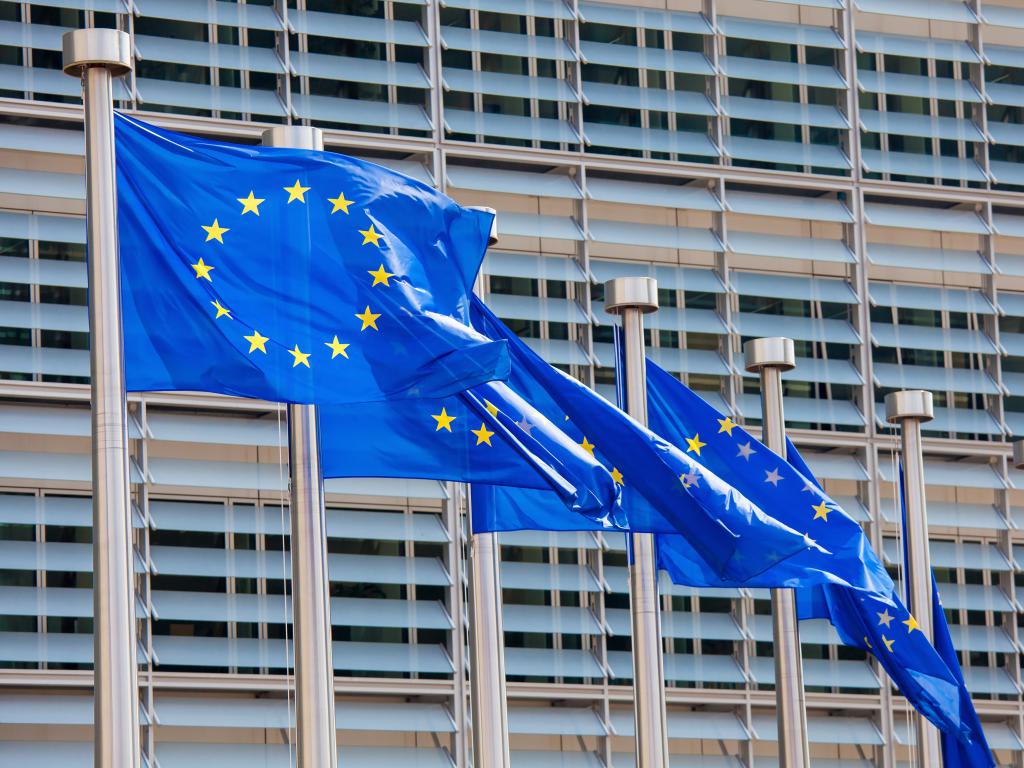With their zero- and low-emissions investment portfolio, the members of the Polish Electricity Association (PKEE) are actively contributing to the growth of a low-carbon economy. Therefore, the PKEE welcomes an opportunity to present its response to the Inception Impact Assessment (IIA) of the 2030 Climate Target Plan. We would like to point the European Commission’s attention to the following key aspects, which should be addressed in the Impact Assessment. The scope of the analysis should:
-
- Not only be focused on the investment outlays – it should also cover the additional operating costs of the existing capacities caused by the more ambitious GHG emissions reduction target (i.a. additional carbon cost) – only then the risk of stranded assets would be adequately addressed; - should also include additional operating costs of existing generation capacity due to a more ambitious greenhouse gas emission reduction target (inter alia additional costs of emission allowances) - because only then will the risks associated with orphan assets be properly addressed;
- Reflect the available financial instruments dedicated at the EU-level to boost the implementation of the more ambitious climate targets. The market-based financial instruments might not be enough – there is a need of non-refundable financial measures to enable more financing from the financial market. Those measures should also be covered by the scope of the EC’s analysis including i.a. the Modernisation Fund, Innovation Fund and Just Transition Fund; This is because market-based financial instruments may not be sufficient - there is a need for non-repayable finance to obtain more funding from the market. Such measures should also be included in the scope of the EC's analysis and include, among others, the Modernisation Fund, the Innovation Fund and the Fair Transformation Fund;
- Reflect the data collected at the national level regarding i.a. macroeconomic impacts of the new climate targets and power price assumptions. The Impact Assessment’s input data at the European level should be consulted and verified by the Member States to ensure its integrity and accuracy; Impact assessment inputs at European level should be consulted with and reviewed by Member States to ensure consistency and accuracy;
- Take into account the COVID-19 aftermath – especially the potential long-term impact on the supply chain of components and technologies necessary to reach a more ambitious renewables target; particularly the long-term effects on the supply chain of components and technologies necessary to achieve a more ambitious renewable energy target;
- Estimate the potential impact on different sectors – including potential unemployment in the coal-dependent sectors and impact on the most vulnerable regions; including possible levels of unemployment in coal-dependent sectors, as well as the impact on the regions most affected by the transition;
- Take into account the existing regulatory obligations based on e.g. already functioning capacity mechanisms – analytical assumptions may not be based on a modelling that is isolated from the legal environment. - analytical assumptions cannot be based on modelling detached from the legal environment.
Reflecting the additional carbon cost
According to recent projections, the 50% target rises up the price of allowances to 34 EUR/EUA and 52 EUR/EUA in 2025 and 2030 respectively. The result of raising the reduction target to 55% will be an increase in the price of allowances to 41 EUR/EUA and 76 EUR/EUA (CAKE, KOBiZE)[1]. From the point of view of our members’ investment portfolio, the current EU ETS scheme is robust enough to ensure economic incentives for the transition to low-carbon power generation. The PKEE underlines that the transition may be more difficult for companies with OPEX strongly depending on the EUA prices because in the case of high prices of EUAs, their own financial resources for new low-emission investments are severely depleted and as a consequence slow down the pace of transformation. Higher carbon price also increases the company’s overall economic risk and creates additional obstacle in obtaining the financing from the financial market.
Reflecting the need of more EU-based funding dedicated for energy transformation
The net-zero emissions economy in 2050 requires significant investment outlays, estimated to reach EUR 179-206 billion (CAKE, KOBiZE)[2] for the power generation in Poland. The total carbon cost for the entire Polish energy sector in the 55% emissions reduction scenario by 2030 will be EUR 68.5 billion. Because of the additional carbon cost (40% vs 55% scenario) – which is equal in the case of the Polish energy sector to ca. EUR 31 billion till 2030 – the most vulnerable Member States should be additionally compensated via EU ETS-based compensatory measures by increasing the share of allowances dedicated to the “solidarity pool” up to 20% of the total quantity of allowances and increasing the Modernisation Fund fivefold. Those additional resources should be dedicated solely to the energy mix transformation. The Innovation Fund should also be considered as the long-term energy transformation instrument. The Commission’s 2030 Climate Target Plan should provide an outline of the revised instruments adequate to address new challenges ahead. The total cost of emission allowances for the entire Polish energy sector under the 55% reduction scenario by 2030 will be EUR 68.5 billion. Due to the additional cost of emissions (40% vs. 55% scenario) - in the case of the Polish energy sector - this will be around EUR 31 billion by 2030. Therefore, the most affected Member States, such as Poland, should be further supported by EU ETS-based compensation measures to increase the share of allowances allocated to the "solidarity pool" to 20% of the total number of allowances, and to increase the Modernisation Fund by a factor of five. These additional resources should be devoted exclusively to the transformation of energy mixes. Furthermore, the Innovation Fund should be recognised as a long-term instrument for the energy transition. This is why the European Commission's plan for the 2030 climate targets should outline updated instruments that respond to new challenges.
Using data verified at the national level
The broad impact assessment should identify in detail the social and economic costs not only for the whole EU but also individually for all Member States and for the regions, which are the most affected by the transition. It is necessary to conduct a thorough country-specific impact assessment that will reflect the different starting points and distribution of costs and benefits of the energy transition or to show the national results in the general Impact Assessment. Therefore, the input data at the European level should be consulted and verified by the Member States – only then there would be no doubt regarding the analytical background behind the results aggregated at the EU-level. input data at European level should be consulted with and verified by the Member States, because only then will no doubt arise as to the analytical basis of the results aggregated at EU level.
Taking into account the COVID-19 aftermath
Now, when COVID-19 outbreak has an enormous impact on the European economy, any consideration of new more ambitious climate targets should take into account this extraordinary situation. Widespread supply chain disruptions are putting energy projects significantly at risk; therefore potentially more ambitious renewables targets should include the new capabilities. Moreover, access to stable and affordable energy but also support for new investments is particularly important to strengthening the economy after this crisis. The PKEE believes that the special funds dedicated to the energy transition should be included in the EU recovery programmes. EU recovery programmes should include additional funds for energy transition.
Reflecting the potential impact on different sectors
The PKEE appreciates that the Commission in the IIA recognises that all the sectors of the economy and society will need to contribute evenly to the transition. The PKEE agrees that the energy sector has to face the most serious challenges, thus other sectors (both covered by the ETS and non-ETS) should participate more actively and the level of their contribution ought to be properly defined. The broad impact assessment should also identify in detail the social and economic costs and carefully reflect the impact on the most vulnerable regions.
Taking into account the existing regulatory obligations
The IIA stresses the need to examine the effects of possible changes on the energy sector and to maintain coherence with the legal acts strongly linked with the energy sector. The PKEE welcomes that the Commission recognises that the possible revision of targets is related to other acts and instruments, such as the Energy Taxation Directive[3], the Carbon Border Adjustment Mechanism[4] and others. The comprehensive impact assessment must fully assess the mutual impact of all these regulations.2 and other regulations. Therefore, a comprehensive impact assessment must fully assess the mutual impacts of all these pieces of legislation.
In our view it is essential to reflect the legal obligations for installations’ operators resulting from capacity mechanisms. Many Member States have introduced capacity mechanisms to ensure the necessary level of security of supply. The huge part of capacity has been already contracted and long-term investments have been made on the basis of capacity mechanisms, therefore it is not feasible without endangering the security of supply to phase out the capacity contracted under capacity mechanisms. The PKEE believes that all the essential regulatory obligations should be presented by the Member States alongside with their data input.
A reasonable pace of the transition
The PKEE believes that all climate goals will be set in the spirit of the energy solidarity principle and that they will truly ensure that “no one is left behind”. All essential climate objectives, which include the increase in the GHG emissions reduction target for 2030, should be subject to approval by the European Council.
[1] The European Green Deal impact on the GHG’s emission reduction target for 2030 and on the EUA prices, CAKE, KOBiZE.
[2] Scenarios of low-emission energy sector for Poland and the EU until 2050, CAKE, KOBIZE.
[3] See also the PKEE position on ETD: https://pkee.pl/en/the-polish-electricity-association-position-on-inception-impact-assessment-of-the-revision-of-the-energy-taxation-directive-/
[4] See also the PKEE position on CBAM: https://pkee.pl/en/the-polish-electricity-association-position-on-inception-impact-assessment-of-the-carbon-border-adjustment-mechanism/
DOWNLOAD FILES

